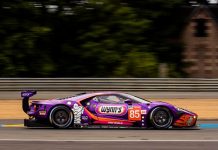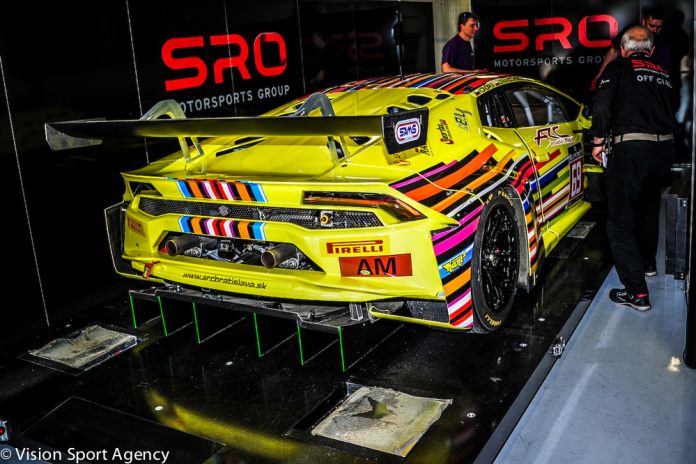This year, SRO Motorsport Group’s world-renowned Balance of Performance regulations will be used across the Asian continent for the first time when Blancpain GT Series Asia’s inaugural season roars into life at Sepang International Circuit on April 8/9.
SRO’s BoP settings are already used for individual races in the region, such as the Motul Sepang 12 Hours, and for GT3 cars competing in Japan’s Super GT series and the Australian GT Championship. But 2017 will be the first time they’ll govern a pan-continental Asian GT3/GT4 category.
Balancing performance ensures cars of all shapes and sizes compete equally. But how does the process work, what sets SRO apart from others, and why does it matter so much to modern-day customer GT racing? Here, Blancpain GT Series Asia’s promoter reveals some of the history and secrets behind the science.
Background: the birth of GT3 and BoP
SRO Motorsports Group has run and promoted domestic, regional and world GT championships and series for the past 25 years. It is internationally recognised as the sport’s leading authority on both the GT3 and GT4 categories it originally created and continues to administer around the globe.
However, that expertise wasn’t gained overnight. Instead, it has been learnt the hard way during a quarter-century of competition. Throughout that time it has shaped modern-day GT racing, the cornerstone of which remains SRO’s Balance of Performance regulations.
“We created GT3 at the end of 2005 with the aim of developing customer GT racing using everything SRO and the FIA had learnt over the previous decade,” says SRO founder and CEO Stephane Ratel. “The GT1 and GT2 categories we promoted had their place at the time, but one-make championships organised by individual manufacturers were also popular.
“The key was bringing cars together in a way that would allow different models and engineering concepts to race equally in a cost-effective way without sparking a development war, which inevitably drives up the price of competing and deters customers. Manufacturers and teams never want to lose an advantage but they understood that we would have to level the playing field by balancing their cars in order to create stability and for the business model to work long-term.”
Cars contesting the FIA GT3 European Championship’s debut season in 2006 were very different to those now racing around the world in various GT3 series. But, crucially, manufacturers embraced the concept, and continue to do so 10 years on – now in GT4 as well as GT3 – thanks to the Balance of Performance regulations pioneered by SRO and the FIA.
Now that experience is coming to Asia full-time.
Maintaining the balance of power
Balancing the performance of numerous production-based supercars originally designed to different specifications and using different engines so they achieve approximately the same lap times on a wide variety of circuits is a game SRO has been playing for more than a decade.
The growing popularity of GT3 and GT4 has seen ever more manufacturers from all over the world join both category’s ranks in recent years. To maintain parity each new model or update – be it to engine/powertrain, aerodynamics or chassis – must be assessed in similar conditions to that of its rivals.
Therefore, twice a year, SRO holds a compulsory test at its permanent Race Centre base at Circuit Paul Ricard in southern France where each car is scrutinised and driven by the same professional racing drivers. The data gathered forms the basis of each car’s BoP settings, which can be altered from one circuit to the next depending on their characteristics.
The man overseeing this unenviable task, both at the Paul Ricard tests and then for each of SRO’s championships throughout the year, is the organisation’s technical director, Claude Surmont.
“It’s a lot of work but entirely necessary if we’re to achieve the accurate results required to properly balance the cars,” he says. “Manufacturers, teams and drivers have to trust our BoP – we impose it on them so it’s very easy to blame a poor performance on what they’ve been given by us. It’s a never-ending process because there are always new updates to assess, and usually one or two new models a year.”
So how does Claude and his team keep everyone happy?
“We have a lot of areas to consider but start with those that have the biggest impact on lap time: power, torque, weight and aerodynamics. We look at the car’s original homologation files, what we’ve learnt from the test sessions and also data gathered on the engine dyno. Everything is then added to our in-house simulation software, which creates four separate BoP figures for each car. The type of circuit they race on decides which is used at any given time.
“It’s impossible to devise the perfect equation. But, through experience and interpretation, we’re able to calculate fairly accurate numbers, to the point that we’ll know if someone is running incorrect BoP settings. Ultimately, we’re aiming for each car to be capable of lapping within 0.3 seconds of its rivals on any sort of circuit configuration.”
SRO isn’t the only championship organiser to balance the performance of its cars. Others around the world use their own BoP settings, albeit with a few crucial differences.
“All of the cars are designed to a set of common regulations, which are known parameters; they don’t change,” continues Claude. “But the track data we gather is very important because no-one really knows how a car will behave until it’s being driven hard on the circuit.
“Some other championships that use their own BoP rely on the teams to supply that information, which often leads to accusations of sandbagging and skewed numbers. That can’t happen with SRO’s GT3 and GT4 BoP because we have two drivers working for us in a controlled environment. Every car is assessed using the same tyres, fuel mixture and engine settings. It all comes back to creating a level playing field so that no-one has an unfair advantage.
“Furthermore, instead of collecting data from a specific series – the performance level of which could be affected by its drivers’ and teams’ abilities – SRO examines samples from a large number of championships and events around the world. These range from the Bathurst 12 Hours in Australia to the Pirelli World Challenge in America, and the Sepang 12 Hours in Asia to Europe’s Blancpain GT Series and British GT Championship. The data collected from cars running with so many drivers and teams on so many circuits allows us to extract the true performance of each model.”
With more than 15 manufacturers now producing GT3 cars globally there’s a lot of pressure on SRO to make the correct BoP calculations. And figures from last season’s Blancpain GT Series – where 11 different brands were represented – suggest Claude and his team are doing just that.
For instance, 2016’s Endurance Cup opener at Monza saw the first 30 cars – comprising 10 different models – lap within a second of each other in qualifying, while an average of six manufacturers and 15 cars qualified within a second of pole at the first six Blancpain GT Series events.
Such small differences ensure that drivers remain the most important element in the partnership between man and machine. That’s a rare occurrence in a sport often dominated by the equipment rather than individual.
And it’s exactly what Blancpain GT Series Asia promises to deliver in 2017.









